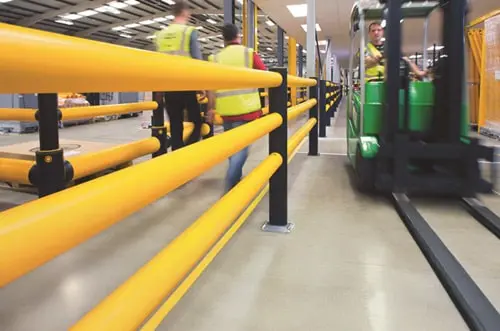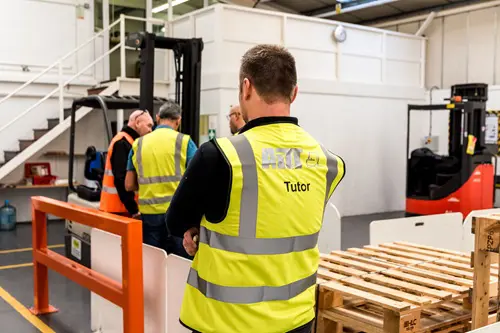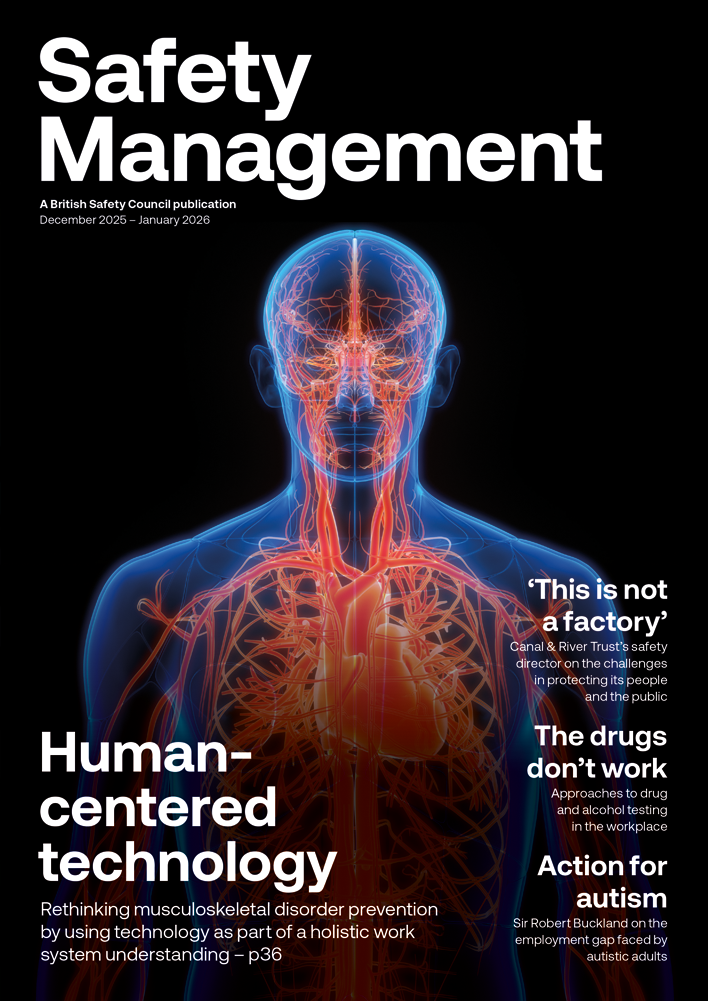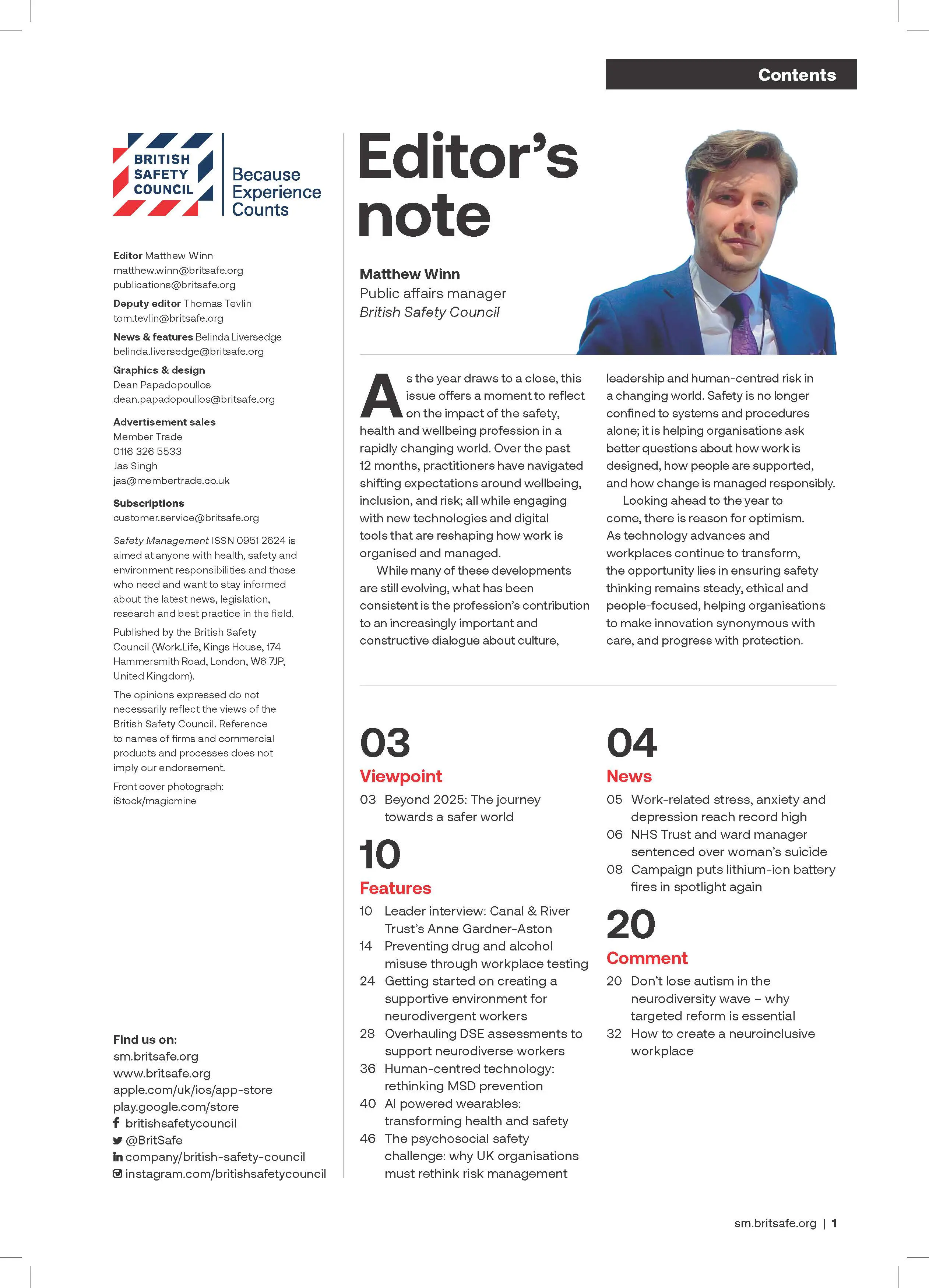Drug and alcohol testing can be an effective way of preventing substance misuse causing safety problems at work, but it’s vital to provide education and support so employees understand the dangers substance misuse poses to their own health and to the safety of colleagues and the public.
Features
Safe, focused and productive: why employers should test for drugs and alcohol
Workplaces today are fast-paced and demanding, and employees face pressures that can sometimes lead to substance misuse. The impact of drugs and alcohol at work isn’t just an individual problem, it affects colleagues, workplace culture, safety and productivity.
Yet, too many organisations treat it as a ‘behind-the-scenes’ issue. The truth is that employers cannot afford to ignore it.
The scale of the issue
Substance misuse in the workplace is more common than many realise. According to BUPA, “34 per cent of employees surveyed, report having used or witnessed substance use or addictive behaviours during work hours". However, this doesn’t just prompt concerns about the workplace safety risks arising from heavy, daily use of substances; as even a single instance of impairment can lead to mistakes, lapses in judgement and accidents.
In safety-critical industries – such as construction, manufacturing or transportation – a single incident involving an impaired employee can result in serious injury, fatalities or costly damage to equipment. However, the negative impact of substance misuse is not limited to these sectors. In offices, impaired employees can make errors in judgement, miss deadlines and disrupt team dynamics. The ripple effects of these issues can include missed targets, frustrated colleagues and operational inefficiencies, and these impacts can be felt across the organisation.
 Substance misuse in the workplace is more common than many realise. Photograph: iStock
Substance misuse in the workplace is more common than many realise. Photograph: iStock
The financial cost of substance misuse and abuse by workers is significant. According to a 2024 report from the IPPR, the annual ‘hidden’ cost of employee sickness – due to all causes – has risen by £30 billion since 2018, with most of the increased cost (£25bn) due to lower productivity among people working through sickness.
Although the estimated costs quoted by IPPR are due to all types of workplace sickness – not just due to substance misuse – figures such as this highlight just how expensive inaction on tackling sickness-related problems like substance misuse can be for businesses.
When substance abuse goes unchecked companies not only face direct costs, such as accidents and legal claims, but also the hidden costs of presenteeism, reduced efficiency and higher staff turnover. Alongside these negative financial impacts, organisations also risk reputational damage if safety incidents occur while employees are under the influence of substances and the public perceives a contributing factor to the incident was the company’s neglect of safety or employee welfare by failing to tackle substance misuse.
Therefore, companies who fail to acknowledge that substance abuse could be a real issue in their business leave themselves more exposed to accidents, absenteeism and lower productivity, as well as risking legal liabilities and reputational damage if they fail to take action to prevent and manage the problem.
The importance of a clear workplace policy
A well-defined drug and alcohol policy is the cornerstone of any effective workplace strategy to address substance misuse. Without a clear framework in place, employers risk confusion and legal challenges when substance misuse incidents happen – such as a workplace accident where an employee was under the influence.
A robust policy provides both protection for the organisation and clarity for its employees and ensures that everyone understands their rights, responsibilities and the company’s expectations in terms of preventing substance misuse at work. It also ensures everyone is aware of the support that will be offered to those who seek or require help with substance abuse problems.
At its core, a policy should clearly communicate the organisation’s commitment to safety, employee wellbeing and professional standards. It should outline exactly what constitutes unacceptable behaviour, under what circumstances testing may occur, and the medical, support and disciplinary procedures that will follow a positive test or suspected case of impairment. This will avoid ambiguity and ensure that managers act consistently and fairly.
Transparency is key when creating and implementing a drug and alcohol policy. Employees need to understand exactly what the policy covers and how testing will be carried out to avoid any confusion or mistrust arising among them. This includes outlining what test methods will be used – such as urine, oral fluid or hair testing etc – so employees know what to expect and feel reassured that the process will be handled professionally and respectfully.
A strong policy should also include support mechanisms for employees who may be struggling with substance misuse. Offering access to counselling, rehabilitation programmes or employee assistance schemes shows that the company’s focus is not solely on enforcement, but also on helping individuals recover and return to full health and productivity. For some employees, simply knowing that support is available could encourage them to seek help before issues escalate.
While disciplinary action will sometimes be necessary for substance misuse, it should be presented as a last resort. The purpose of testing and enforcement of rules around substance misuse at work is not to ‘catch out’ employees, but to protect the safety of everyone in the workplace. By clearly communicating the consequences of breaching the policy, employers can set boundaries that are understood and respected.
Crucially, the policy must apply to all levels of the organisation, including senior management and external contractors. This ensures fairness and demonstrates that no one is above the rules. Leadership buy-in is essential, because when managers are seen to follow the same rules as everyone else, it builds trust and reinforces the seriousness of the policy.
Finally, using a laboratory that has been fully accredited under the ISO/IEC 17025 standard as technically competent in drug and alcohol testing to provide the necessary testing equipment, conduct tests, analyse samples and provide test results will ensure tests are carried out to a high standard of accuracy and defensibility. This will protect both the business and its employees by ensuring results are reliable and stand up to scrutiny.
 Photograph: iStock
Photograph: iStock
Education and awareness
Even the most robust drug and alcohol policy will only be effective if employees understand why it has been drawn up, how it works in practice and the rules and duties it places on them as individuals.
As a result, it is vital employers provide suitable and comprehensive education and awareness so employees understand the requirements of the drug and alcohol policy and how to follow the procedures – for example, company rules prohibiting staff being impaired at work; the screening and testing procedures in place; and the support available for those with a substance misuse or dependency problem.
By proactively educating the workforce about the risks of substance misuse, both to personal health and safety at work, companies can reduce the likelihood of problems arising and create a culture of safety and accountability.
Many employees are simply unaware of how certain substances affect their performance at work and increase the risk of errors and accidents. Alcohol, for instance, can impair judgment and reaction times long after consumption, while some prescription or over-the-counter medications can cause drowsiness or reduced concentration. Employers should therefore educate staff about the health, wellbeing, safety and productivity impacts of substance use and misuse so workers can make informed decisions both inside and outside the workplace to reduce the chance of unintentional impairment.
Workshops, training sessions and regular awareness campaigns are effective ways to communicate various risks arising from substance use and misuse. These initiatives should go beyond simply highlighting the dangers – they should also explain the support systems available within the company.
The education programme should also cover the practical aspects of the company’s drug and alcohol policy and testing procedures in place. Employees need to know when and why testing may take place, how the process works, and what their rights are at every stage. Clear communication about the reasons for testing, the test methods and procedures, and how the results will be managed – will reduce anxiety and build trust, ensuring staff see testing as a safety measure rather than a tool for surveillance.
Ultimately, the aim of the substance misuse education and awareness programme should be to foster a shared responsibility for workplace safety. When employees understand the risks, the rules and the support available to them, this empowers them to make safer choices and contribute to a positive, proactive workplace culture. This not only prevents incidents relating to substance misuse at work but also strengthens overall trust and morale across the organisation.
 Urine testing is the most widely used method for detecting drugs and alcohol. Photograph: iStock
Urine testing is the most widely used method for detecting drugs and alcohol. Photograph: iStock
Approaches to testing
Although it is essential to develop and implement a clear policy on substance misuse and testing, for the policy to be effective, it must be supported by a practical testing strategy. There are several approaches to workplace testing and the best choice often depends on the industry, the level of risk, and the organisation’s culture. The most common testing methods include:
- Urine testing: the most widely used method, with a detection window of 12 hours to 12 days for drugs and up to 24 hours for alcohol, depending on the substance.
- Oral fluid (saliva) testing: this is a less invasive procedure and is ideal for detecting recent drug use, with a detection window of 24–48 hours. However, for some drugs, the detection window may be significantly less, meaning a saliva test can detect results within 30-60 minutes of ingestion.
- Hair testing: this provides the longest detection window, showing patterns of use over time. The detection window is 0–12 months dependent on the length of the hair tested, with approximately one centimetre of hair growth allowing detection over a one-month period, etc. The longer window of detection provides a detailed, overall picture of drug use and is also effective in identifying abstinence.
- Breath testing: used exclusively for alcohol, this offers instant results and a detection window of up to 24 hours.
When drawing up an alcohol and drug testing policy, employers also need to consider when testing should take place, taking into account the specific circumstances of their business and the safety risks in their workplace. There are several circumstances under which testing might take place:
- Pre-employment testing is conducted before a candidate officially joins the organisation, particularly for safety-critical roles. It ensures that new hires have not recently consumed drugs or are not under the influence of alcohol and are physically and mentally fit to perform their duties safely.
- Random testing is carried out on an unpredictable schedule, which prevents employees from identifying when they will be tested. This unpredictability acts as a strong deterrent against substance misuse and encourages ongoing compliance with company policies.
- Post-incident testing is carried out after accidents, near-misses or other safety breaches to determine whether impairment contributed to the event. It supports thorough investigations, helps identify root causes, and provides evidence for insurance or legal purposes.
- Reasonable suspicion testing is initiated when a supervisor or manager (or a worker’s colleague), observes behaviours that suggest an employee may be under the influence, such as slurred speech, erratic movements or unusually poor performance. This type of testing allows timely intervention before safety is compromised, protecting both employees and the organisation.
Support for employees
Although a workplace drug and alcohol policy and testing programme is designed to enforce the company’s rules on substance misuse and to keep everyone safe, it is also essential employers offer adequate and suitable support for employees struggling with substance misuse. The aim should be to prevent problems arising in the first place, encourage staff to seek help at any stage, and provide support in the event of a worker failing a drug or alcohol test.
 Counselling may encourage individuals to seek help. Photograph: iStock
Counselling may encourage individuals to seek help. Photograph: iStock
Providing access to counselling, rehabilitation programmes and employee assistance schemes will encourage and support individuals to seek help proactively, often before issues escalate to become safety or performance concerns. Structured return-to-work plans, mentoring and ongoing monitoring will also help ensure a smooth reintegration for staff who have undergone treatment for substance misuse and addiction problems.
By offering comprehensive support, organisations will not only help employees recover but also reduce the likelihood of repeat incidents of substance misuse.
Suitable support programmes for those with substance misuse problems will also improve staff engagement in general and foster long-term loyalty and productivity, as they demonstrate that the employer takes employee welfare seriously and wishes to help workers deal with problems like substance misuse, dependency and addiction. In short, a comprehensive support programme demonstrates that the company values its people as well as its safety standards.
Promoting a positive culture
A positive workplace culture reinforces safety, accountability and mutual respect, creating an environment where employees feel supported rather than policed. When staff see that the organisation prioritises their wellbeing alongside compliance with drug and alcohol rules, they are more likely to take responsibility for their own behaviour and seek help for a substance mise problem without fear of stigma.
A company’s leaders play a crucial role in modelling healthy practices, following the same rules and demonstrating fairness across all levels of the organisation.
Clear communication, recognition of responsible behaviour and accessible support systems help cultivate trust, morale and team cohesion. A proactive culture aimed at supporting and maintaining worker wellbeing will not only help prevent substance misuse but will also encourage collaboration, accountability and a sense of shared responsibility for workplace safety among the entire workforce.
When seeking to prevent substance misuse at work, employers should begin by recognising that substance misuse is not just a personal issue – it affects every corner of an organisation. However, implementing clear policies, effective testing, robust support systems and proactive education will help create an environment where employees can thrive safely and responsibly.
These measures will also help ensure the organisation complies with its duties under health and safety law to ensure the health, safety and wellbeing of its employees and others who could be affected by the actions of the company’s workers – for example, by preventing people being injured due to one of the organisation’s employees being under the influence of drugs or alcohol.
In today’s fast-paced and high-pressure working environments, taking action to prevent alcohol and drug misuse at work is not optional – it’s essential. By prioritising both safety and support, an organisation will protect its people, reputation and bottom line.
For more information see randoxtestingservices.com
E. [email protected]
T. +44 (0)28 9445 1011
Jordan Reid is marketing executive at Randox Testing Services.
FEATURES

Underpinning safety training with neuroscience for long lasting impact
By SSE Active Training Team (ATT) on 30 November 2025
A behavioural safety training programme developed by Active Training Team for energy provider SSE has been carefully designed with neuroscientific principles in mind – resulting in a prestigious industry award for Best Training Initiative in 2024.

Why a painted line will never be enough
By UK Material Handling Association (UKMHA) on 20 November 2025
Businesses that operate material handling equipment like forklifts are being urged to submit accident and near miss details to a new confidential reporting portal so the industry can identify what needs to be done to improve safety standards.

Why workplace transport training is changing in 2026 and what it means for employers
By AITT on 26 November 2025
New workplace transport training categories due in January mean it is essential to ensure operators of material handling equipment have the necessary training for the exact type of machine they use, and accredited training providers are an ideal source of advice and conversion training.



